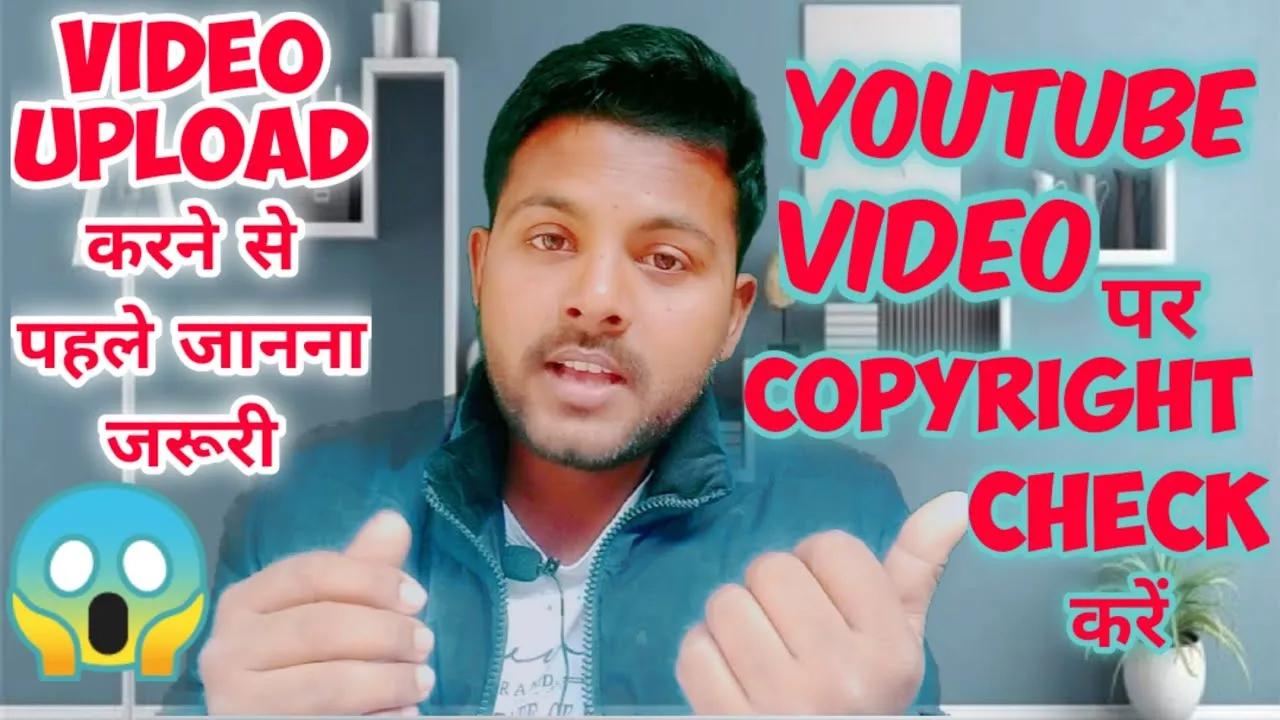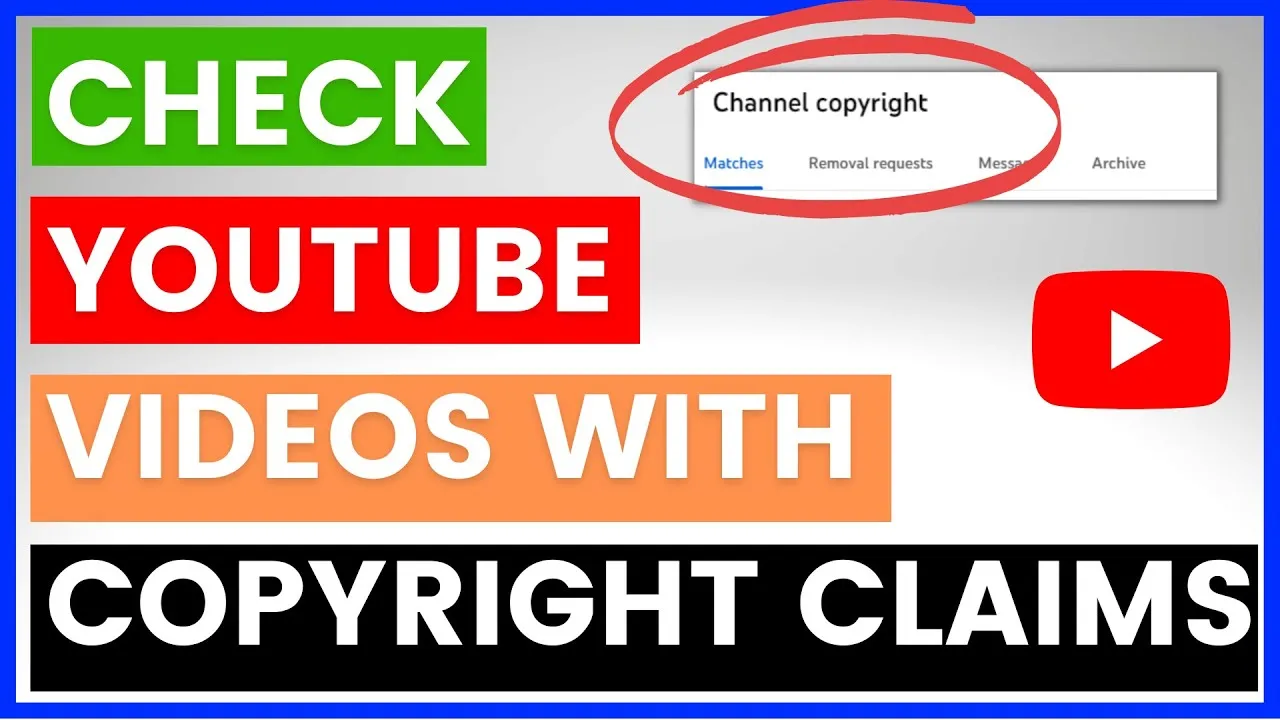When you’re creating content for YouTube, understanding copyright is crucial. Copyright laws protect creators by giving them exclusive rights to their works. This means that if you want to use someone else’s content—like music, videos, or images—you need to be sure you have the right to do so. Failing to respect copyright can lead to your video being taken down, or worse, your account being suspended. So, let’s dive into what copyright means on YouTube and how you can navigate these waters before hitting that upload button.
Understanding Copyright Laws and Regulations

Copyright laws can be a bit of a maze, but they essentially serve to protect the original works of creators. Here’s a breakdown of the key points you should know:
- What is Copyright? Copyright is a legal term that gives the creator of original work exclusive rights to its use and distribution, typically for a limited time, with the intention of enabling the creator to receive compensation for their intellectual investment.
- What Can Be Copyrighted? Almost anything can be copyrighted, including:
- Music
- Videos
- Images
- Text
- Software
- Fair Use Doctrine: This is a legal doctrine that allows limited use of copyrighted material without requiring permission from the rights holders. However, fair use is subjective and often depends on:
- The purpose and character of your use (commercial vs. educational)
- The nature of the copyrighted work
- How much of the work you’re using
- The effect of your use on the market value of the original work
- YouTube's Content ID System: YouTube uses a Content ID system that automatically detects copyrighted material in uploads. If your video contains copyrighted content, you might receive a copyright claim, which can lead to restrictions on your video.
Understanding these elements is vital for any creator. By taking the time to verify copyrighted content before uploading, you can protect yourself and your channel from unwanted legal troubles.
Also Read This: How to Use Twitter for Business: Tips and Strategies for Success
3. Tools for Checking Copyrighted Content

If you're planning to upload a video to YouTube, verifying that your content doesn't infringe on someone else's copyright is crucial. Luckily, there are several handy tools you can use to check copyrighted content before hitting that upload button. Here’s a quick rundown of some effective options:
- Google Reverse Image Search: If your video contains images, run them through Google’s reverse image search. This tool helps you find out if those images are already associated with copyrighted content.
- Creative Commons Search: This tool helps you discover content that is licensed under Creative Commons, which allows certain uses without needing permission. Always check the specific license to ensure your intended use is permitted.
- YouTube Copyright Match Tool: For existing YouTube creators, this tool identifies reuploads of your own content. While it’s more about protecting your own work, it can give you an idea of what’s out there.
- Audible Magic: This service analyzes audio files and can help you determine if your music or sound effects are copyrighted. It’s a go-to for many creators.
- Social Media Platforms: Sometimes, a quick search on platforms like Instagram or TikTok can help you see if your video concept has already been done, which could raise copyright concerns.
Using these tools not only saves you from potential copyright strikes but also fosters a more ethical content creation environment. So, take a moment to check before you upload; it’s worth it!
Also Read This: Design Giving Tuesday Campaigns with Canva Giving Tuesday Templates
4. Using YouTube's Content ID System
YouTube's Content ID system is a powerful tool designed to help creators manage their copyrighted material. When you upload a video, it automatically scans your content against a vast database of copyrighted works, which can include music, video clips, and even specific images. Here’s how it works:
- Automatic Scanning: As soon as you upload your video, YouTube scans it for any matches against copyrighted content in its database.
- Claims and Matches: If the system finds a match, the copyright holder can choose to take action. They might block your video, monetize it, or even track its viewership statistics.
- Dispute Process: If you believe your video was wrongly flagged, YouTube allows you to dispute the claim. However, be prepared to provide evidence that your use falls under fair use or that you have permission.
- Content ID Appeals: If your dispute is rejected, you can appeal the decision. This can be a bit of a process, so it’s best to make sure your content is clear of copyright issues in the first place.
Using YouTube’s Content ID system can help you navigate copyright concerns proactively. Just remember, while it’s a robust tool, it’s always a good idea to conduct your own checks before uploading. This way, you can ensure your creative efforts remain uninhibited and free from legal headaches!
Also Read This: How to Set a Password for YouTube on Your TV to Secure Your Account
5. Best Practices for Avoiding Copyright Issues
When it comes to uploading content on YouTube, being mindful of copyright laws is crucial. You don't want to find yourself in a legal mess after putting in hours of work on a video. Here are some best practices to keep in mind:
- Create Original Content: The best way to avoid copyright issues is to create your own videos, music, and graphics. This ensures that no one else can claim ownership of your work.
- Use Royalty-Free Resources: If you need images or music, opt for royalty-free or Creative Commons licensed content. Websites like Pixabay or Bensound offer great resources.
- Give Credit: When using someone else's work within the terms of Creative Commons, always give proper attribution. It’s not just respectful; it’s often required.
- Understand Fair Use: Familiarize yourself with the concept of fair use. While it allows for limited use of copyrighted material, it’s often a gray area that can lead to disputes.
- Keep Records: Maintain documentation of where you sourced your content. This can include licenses, permissions, or links to royalty-free sites.
By following these best practices, you’ll significantly reduce your risk of running into copyright issues on YouTube!
Also Read This: Musical Contributions: Joining the Rhythm as a Shutterstock Music Contributor
6. Steps to Take if You Receive a Copyright Claim
Receiving a copyright claim can be alarming, but don’t panic! Here are the steps you should follow to address the situation effectively:
- Review the Claim: Carefully read the details of the claim. YouTube will provide information about what content is being disputed and who made the claim.
- Evaluate Your Content: Check if your video indeed contains copyrighted material. If you believe your content is original or falls under fair use, take note of your reasons.
- Consider Your Options: You generally have three options:
- Remove the Content: This is the quickest way to resolve the issue.
- Dispute the Claim: If you believe the claim is invalid, you can file a dispute. Be prepared to explain your reasoning clearly.
- Seek Legal Advice: If the claim could lead to significant issues, consulting a legal expert may be beneficial.
- Stay Calm: Remember, copyright claims are common on platforms like YouTube. Many creators experience them at some point.
Taking these steps will help you navigate the situation and hopefully come to a resolution that works in your favor. Good luck!
How to Verify Copyrighted Content on YouTube Before Uploading
Uploading content to YouTube can be an exciting venture, but it also comes with the responsibility of ensuring that your content does not infringe on anyone else's copyright. Here are some essential steps to verify copyrighted content before you hit that upload button:
1. Understand Copyright Basics
Copyright law protects original works of authorship, including:
- Videos
- Music
- Images
- Scripts
2. Use YouTube's Content ID System
YouTube has a built-in system called Content ID that automatically checks uploaded videos against a database of copyrighted material. Here’s how to utilize it:
- Upload a private version of your video.
- Check for any copyright claims.
3. Conduct a Manual Check
Sometimes, relying solely on automated systems isn't enough. Consider these methods:
- Search for similar content on YouTube.
- Use reverse image search for thumbnails.
- Check music licensing sites for tracks used.
4. Use Copyright-Free Resources
If you're uncertain about the copyright status of certain materials, consider sourcing from:
| Resource | Description |
|---|---|
| Creative Commons | Licenses that allow sharing and remixing under specific conditions. |
| Public Domain | Content that is no longer under copyright protection. |
| Royalty-Free Music Libraries | Platforms that offer music for use without copyright issues. |
By following these steps, you can significantly reduce the risk of copyright infringement on YouTube. Always remember to respect original creators and their works.
Conclusion and Final Tips
Before uploading content to YouTube, take the time to thoroughly verify its copyright status through tools like Content ID, manual checks, and by utilizing copyright-free resources. By doing so, you safeguard yourself from potential strikes against your channel and contribute to a respectful creative environment.